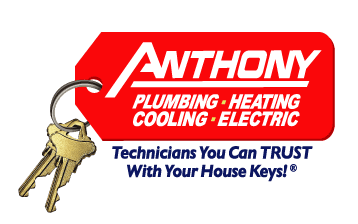According to the Environmental Protection Agency (EPA), the levels of indoor air pollutants may be two to five times, and occasionally 100 times, higher than the levels of pollutants outside. Considering that most Americans spend 90 percent of their time indoors, this is a major concern. Considering the increases in wildfires and viral pandemics, indoor air quality is becoming an even greater worry.
Fortunately, homeowners have a great deal of control over the air quality in their homes. By choosing the right whole-home indoor air quality systems, you can make your home a sanctuary of clean, healthy, odor-free air.
What Type of Whole-Home Indoor Air Quality System is Best?
Depending upon your home, your location and of your family’s individual needs, you may want to consider one, or a combination of, indoor air quality systems. Whole-home indoor air quality systems trap, kill or eliminate the following types of indoor pollutants:
particulates (dust, cooking, fireplaces, candles, smoking, aerosol sprays)
chemical fumes (lead, pesticides, formaldehyde from furnishings, cleaning products)
biological (viruses, bacteria, mold, insect droppings, animal fur and dander)
allergens and odors (posed by all of the above)
Following are three types of indoor air quality systems and how each of them work to remove these harmful substances from your home.
Ionizers, Ozone Generators and Electrostatic Media
What is the difference between ionizers, ozone generators and polarizers? All three remove particles from the air by altering oxygen molecules which makes them adhere to particulates. Each produces some ozone, which is safe in small amounts.
Ionizers
Ionizers work by adding an electron to oxygen molecules creating negative ions. These negative ions add a charge to particulates in the air, making them sticky and causing them to be attracted back to the ionizer. Ionizers work best at removing small particles, but sometimes fall short with odors, gases, and larger particles such as pollen or dust. Ionizers do produce a small amount of ozone, which can irritate the lungs in large quantities. Negative ions have no smell and no harmful effects.
Ozone Generators
Ozone generators produce ozone, which is made up of three oxygen molecules, which makes it unstable and also sticky. Ozone is better as removing smaller particulates, gases, and odors from the air. However, ozone in large amounts can be dangerous. Ozone generators work best if used in a large area or used only while pets and humans are not home.
Electrostatic Media
Electrostatic media are electronic air filters placed in your furnace in place of regular filters. These filters use electricity to alter the electrical field of atoms causing them to be polarized and stick to the media as air is pulled through your system. This offers an effective way to remove a large variety of particulates from the air in your home.
UV Light Technology
UV Light has been proven to kill viruses, mold, and bacteria on contact, which is where other indoor air quality systems fall short. Viruses, mold, and bacteria are too small to be collected by ionizers or air filtration media. Although prolonged exposure to UV can be harmful to humans, UV lamps in your AC coil and ductwork eliminate that threat by directing UV light to pathogens as they are drawn through your ventilation system. But these pathogens must come within a few inches of the UV lamp to be killed.
The Air Scrubber by Aerus® is a special kind of UV lamp that changes water molecules in the air into negatively charged vapor through a process called ActivePure®. These negatively charged molecules leave the UV lamp and actively enter your home’s air and make contact with the surfaces in your home to kill viruses.
Arrestors
Arrestors are filters placed in your ventilation system which trap particulates and prevent them from being circulated back into your air. Arrestors range in effectiveness from the standard one inch filter to high-efficiency particulate air (HEPA) filters, to thick five inch media filters such as the Anthony Clean Machine. Filters are made of tightly woven mesh that traps particulates as they pass through. They are especially good at removing larger contaminants such as dust, pollen, pet dander and dust mites, making them great for people with allergies.
Do You Need a Whole-Home Indoor Air Quality System?
Indoor air can pose health hazards, especially during the closed-window seasons of summer and winter when outdoor air is not allowed to circulate through your home to eliminate the pollutants in your home. Some individuals resist opening their windows even during pleasant temperature due to the allergens and pollutants in the outdoor air where they live.
Everyone can benefit from indoor air quality systems, and the most effective of these are whole-home systems that are installed in your ductwork and facilitated by the air pushed through your AC and furnace system. Individuals with the following conditions can benefit most from whole-home systems:
cardio/pulmonary conditions
allergies
sensitivity to chemicals or smells
young age or advanced age
compromised immune systems
If your home has any of the following conditions, you should also consider a whole-home indoor air quality system:
new furnishings or carpeting or remodeling
constant use such as cooking or indoor hobbies involving chemicals
mold or recent flooding
pet odors
location near car exhaust, industrial areas, wildfires
location in climates where windows remain closed most of the year
An unintended result of today’s tighter homes is heightened levels of indoor air pollution. Dangerous particles, as well as chemicals, are being trapped in your home. Illness-causing micro-organism infestation, allergens, and bad odors are all problems which affect the well-being and comfort of everyone in your home. Call our indoor air quality experts to learn which whole-home indoor air quality solutions are best for you at A-N-T-H-O-N-Y 268-4669 (913) or (816).

